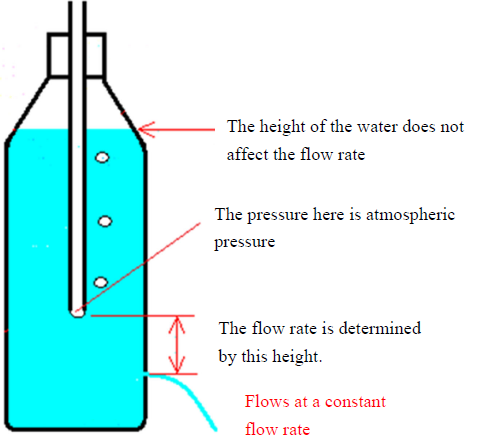Continuous production of bubbles
Let's take a look!
What type of experiment is this?

Experimental procedure and explanation:
- We develop a toy that generates a series of bubbles.
- We drill a hole in the cap of a plastic bottle and insert a straw. (Drilling a hole in a plastic bottle cap is somewhat challenging, but for this experiment, we drilled a small hole with a pin vise and then used a fine round sandpaper to cut the hole. The adhesive used was one that hardens when mixed with agents A and B.)
- We drill a small hole in the bottom of the side of the PET bottle (in this case, I used a pin vise to drill a hole of diameter 2 mm).
- When finished, we cover the hole with cellophane tape, fill it with water, and close the cap. When the cellotape is removed, water starts to flow out. Air bubbles are continuously generated from the straw.
- The flow rate of this toy does not change even when the water level drops. Water flows out at a constant rate and bubbles are generated at a constant rate.
- If we simply drill a hole in the plastic bottle and let it run out, the flow rate will vary depending on the water level ("Water Height and Energy"). We explain why the flow rate remains unchanged as the water level drops in this toy.
- The speed at which water flows out is determined based on the difference between the height of the straw outlet and the height of the hole in the plastic bottle. At the outlet of the straw, it connects to the air outside and is therefore at atmospheric pressure. Because the pressure of the water flowing out of the hole in the PET bottle is also atmospheric, the water pressure difference between the two determines the speed of the water flow. Therefore, regardless of the water level in the PET bottle, the flow rate remains the same.
- The flow rate can be changed by adjusting the height of the straw outlet or by changing the diameter of the straw or the diameter of the hole. This can change the amount of air bubbles produced and the size of the bubbles.
- The reason the straw is bent at the end in this video is to control the flow rate and to clearly see the air bubbles coming out of the straw.
- This experimental video was produced with the support of JSPS Grant-in-Aid for Scientific Research 18K03956.
| [Keywords] | Water depth and pressure, Water height and energy |
| [Related items] | The Height of Water and Its Energy, Timer using water runoff |
Last Update:1.31.2025

